Your website has many pages, and some are more important than others. In this post, I am going to focus on your primary “entrance” pages.
An “entrance” page is a page that is getting a flow of traffic from an outside source, like a search engine, or a referral from another website, or an advertisement, etc. Your primary “entrance” pages for purposes of this article are your Home Page and any pages where you are directing traffic from PPC ads (like from Google Ads, Social Media Ads, Display Ads, etc.)
I like to think of these pages as your entire collection of Home pages, because the reality is that a lot of visitors to your website don’t come in through your home page – so their first impression of your business, website, and brand is on one of these “entrance” pages. Some people might also call these pages landing pages or top of funnel pages.
Start Here – Mapping Out Your PPC/SEO Target Pages
If you haven’t had a conversation with your PPC/SEO campaign manager about target pages, then you’ve got yourself a red flag. If there’s not a plan in place and a strategically designed map of which pages are going to get traffic, then it’s quite possible you’ve got a “throw a bunch of stuff at the wall (aka your actual home page) and see what sticks” style campaign.
I don’t recommend this type of campaign, if you are wanting real business and revenue growth results. If you find yourself in this situation, call us. We can help.
One foundationally critical piece of any good, solid marketing traffic campaign is categorizing the major “pillars” of your business and creating a map of which pages on your website will represent those pages. For example, if your business has 5 major different service or product offerings or categories of offerings, there should be a single page for each of those, for a total of 5 pages, not including your actual primary website home page which added in would make 6:
- Home Page
- Pillar Product/Services Target Page #1
- Pillar Product/Services Target Page #2
- Pillar Product/Services Target Page #3
- Pillar Product/Services Target Page #4
- Pillar Product/Services Target Page #5
Each of these pages would become a target for driving traffic based on the ads you are running, the keywords you are ranking or bidding for placement on, etc.
Establishing Page Goals
Every one of these pages needs to have a well thought out and specific goal. That goal should be to call your potential audience forward quickly, and ask them to take action (usually in the form of becoming a lead)… while simultaneously repelling anyone that is NOT your audience. So we want high engagement from your potential audience and bounces/exits from the people that don’t resonate with what you are doing.
Here are a few possible goals for your page:
- Lead Generation (convert visitors into leads so you have contacts you can keep in touch with)
- Sales (convert visitors into buyers)
- Send Traffic to Another Page
9 times out of 10, I recommend Lead Generation as the best of these 3. Sometimes the other 2 will make sense for your traffic/campaign. Most of the time, however, get the leads. You can always turn leads into sales and drive your leads wherever you want them to go in time as you build trust, nurture and stay in touch.
I highly recommend prioritizing this before launching a traffic campaign, so that your traffic results are measurable – otherwise, you’ll be unclear on exactly what the traffic you are paying for is producing for your business.
Word Count and Other Content Tips and Guidelines
Word count matters. A lot. Especially if you are wanting to attract more of the best type of traffic available online — organic search engine traffic. Yes, I said it. The best type of traffic available online. I’ll follow this by saying, for most businesses, websites and brands (as there are a handful, just a few exceptions). Word count also can matter for PPC, as the more in depth and engaging your page is, usually you’ll get higher quality scores which results in better campaign results overall.
Think authority. You want to come across as the premiere, frontrunning authority on the topic you are talking about for each of these pages you are planning and creating. You know your business as good or better than anyone else on the planet, at least from your lens, experience, personality, etc. So bring to the table something original, epic, flavorful, and is essentially the perfect combo of who you are, what your business is, and what the topic is.
When we work with clients we use an artificial intelligence tool that scans the top 10 organic listings on google for any specific keyword search. The AI engine reads all 10 pages and collects data like how many words on avg per page, how many paragraphs, headlines, images, etc. This data is super valuable because you can use it to essentially “outdo” the competition. If you can bring to the table a page that has a bit more words, paragraphs, headlines and images, AND simultaneously be beautiful, well laid out and engaging, then you’ve got yourself into the competitive mix and are giving yourself the best chance at a position on page 1 in the near future.
If you aren’t using a sweet AI tool like us or with us, that’s OK. I recommend 1000 to 2000 words minimally for one of these pages. Start with that and structure your page like a well thought out outline. One single title/headline and then subheadlines underneath of that to organize your content. You can even use 1 or 2 other levels of nested subheadlines if you’d like. The more thought and planning you put into the structure of what you are writing and creating, the more the search engines will love you, and so will your audience.
Use of SEO Keywords in Your Content
Since one of the major goals of these pillar content pages is to rank higher on Google for specific keywords, you will need to use your target keywords on the page. Google will only rank you for keywords that you are actually using and demonstrating authority through the quality, breadth and volume of your content. With that said, how do you properly use keywords on your page?
First things first. Every content page on your website (that you wish to rank on Google) should have 1 primary keyword target. Just one. Yes, it is possible to rank a page for multiple keywords, but you should know exactly which keyword is your primary target. Your primary keyword might be the best on this topic because of it’s approximate monthly search volume, or precise relevancy to this page in particular. Make sure you know what that primary keyword is for each page you are building.
Now, primary keywords are supported by other keywords which for the purposes of this article I will call secondary keywords. Going into your page creation process you should already have a primary keyword and a list of secondary keywords that will probably come from your SEO strategist (or from your own keyword research).
Use your primary keyword in the main title/heading (H1 tag for those that know what this is – an indicator in the code that this is your primary/main title/heading).
Use your top secondary keywords in subheadlines on your page.
Use your primary and secondary keywords throughout the paragraphs, bullet areas, FAQs, and other content areas. Just don’t overdo it. I like to stick to a 1-2% rule on primary keyword and 1% and under on secondary keywords. These %s I am talking about are keyword density %s. To learn more about keyword density and how to calculate keyword density to avoid overstuffing your page with too many of one keyword, check out this article.
Layout and Design Tips and Guidelines
Alright, now that we’ve covered the foundations you’ll need to consider for planning your epic collection of “home pages” on your site, let’s talk layout and design.
The primary purposes of the layout and design on these pages are as follows:
- High Visitor Engagement – we want your visitors scrolling, pausing to check out content, scrolling some more, watching videos, filling out lead forms, clicking buttons/hyperlinks, etc. The longer we get them to stick around on the page and interact with the page the better!
- Absorb Word Count – these pages will ideally have a massive amount of content, minimally 1000 to 2000 words – some of these pages might have 5k-10k words and beyond. We need a design layout/structure that absorbs these words and displays them in a beautiful way without the words looking to paragaphy/texty/blocky/etc. People don’t like to read large chunks of text. People like browsing, scrolling, catching the headlines, bullets, etc. When they do read, they are looking to read paragraphs that aren’t too long and keep them engaged and moving quickly.
- Dynamic + Static – it’s important to have a combination of static content that might never or rarely change and some content sections of the page that are dynamic and pulling in from other sources so that the page content itself is continually changing (more on dynamic elements below).
- Serve Your Page Primary Goal – we talked about this in the beginning. The design and layout of this page should serve the primary goal of the page. So in most cases, with lead generation being a primary goal, the layout and design should be focused on bringing people back to that call to action throughout the page scrolling experience.
I personally really like and recommend a layout/design flow that goes something like this:
- Above the Fold hero style splash graphic + Headline + Subheadline + Call to Action
- Just below the fold, your product/service offerings with summary descriptions – links to product pages, links to service pages
- Primary competitive advantages and benefits of your brand’s position in the marketplace on this topic
- Testimonials/Case Studies/Stories
- More About Your Product/Service Offerings – Benefits + Features – What Is It – What’s Included
- Video Roll – This can be a dynamic area of videos – a library of video content on a specific topic. You could use plugin software to pull in dynamic video content from your YouTube channel with specific tags related to this page topic.
- More Testimonials/Case Studies/Stories
- Additional Content Area – Resources/Tools
- Instagram dynamic feed pull based on hashtags related to this page’s topic
- Blog Roll – dynamic feed pull based on category related to this page’s topic
- FAQs
- How to Contact Us / Get Help / Etc.
- Footer
The Most Critical Conversion Optimization Consideration Of Your Layout + Design
As mentioned prior, first impressions are key. The most critical part of your web page is the top – what is being conveyed and said on the portion of the page that everyone sees when they first land. This part of your page is called “Above the Fold” and is all content that a visitor sees before they scroll.
We highly recommend and prefer ultra clean, bold and clear, and compelling above the fold designs. Too much content up there will send people bouncing because it is confusing, they don’t know where to place their attention, and they are not being led to the next steps/action. A simple splash graphic or single color background can look great. If a single color background is your choice, then a single contrasting image that helps to tell the story of the topic of the page that complements the Headline + Subheadline and Call to Action is a great choice. A video can look great up there as well. Here are some examples we love:
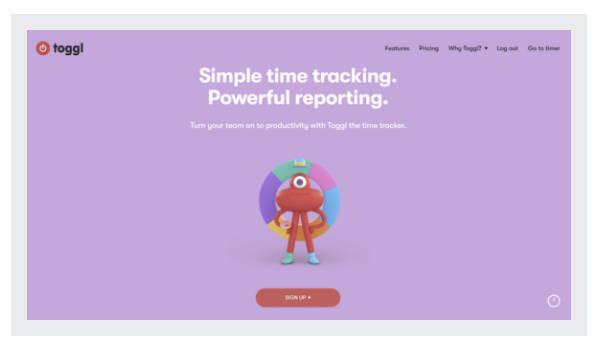
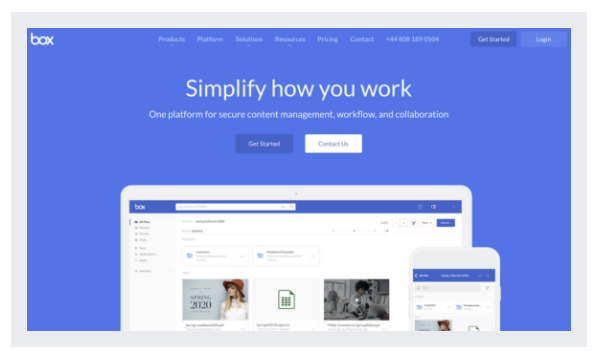
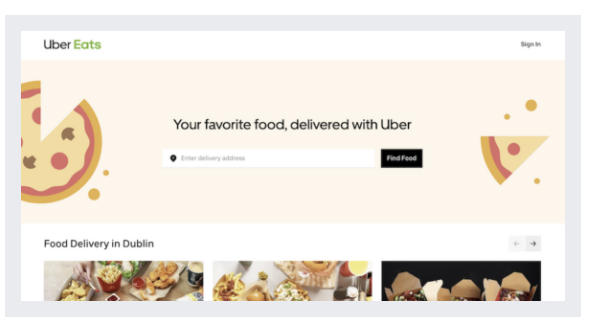
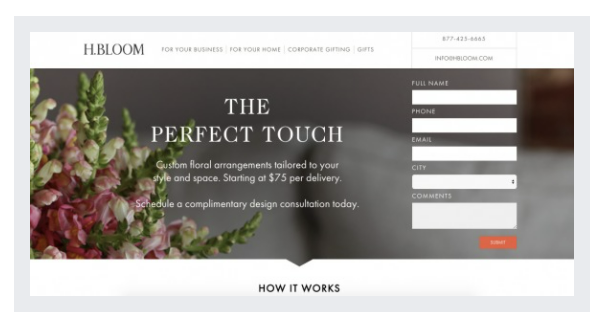
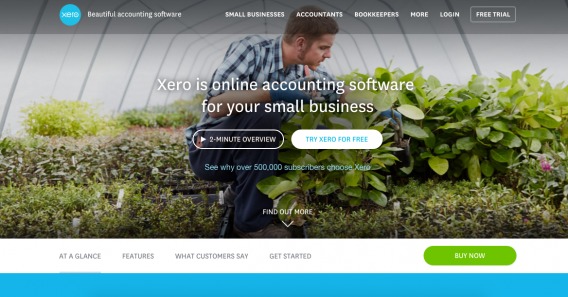
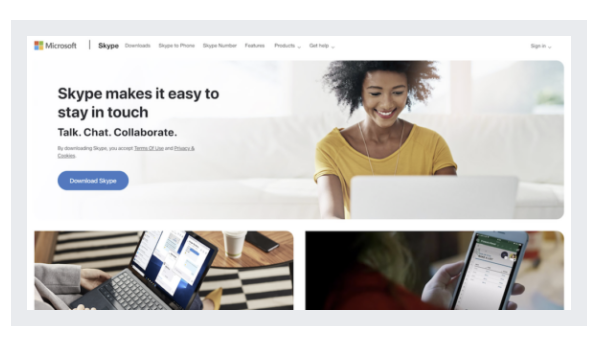
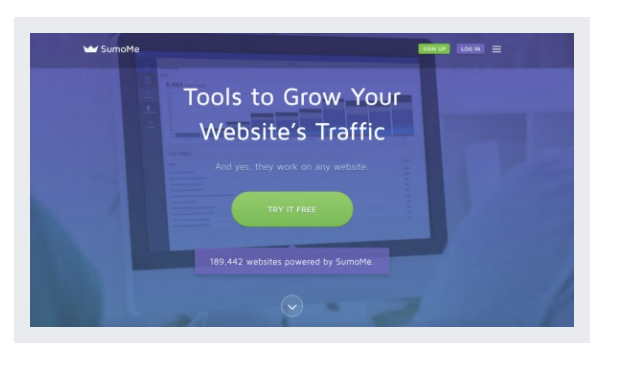
Home Page + SEO/PPC Target Page Layout and Design Examples
Here are a couple of recent designs we did to serve these purposes. In both of these examples, the word count in the demo is 2000 to give you an idea of what it looks like to lay out 2000 words in a beautiful way.

